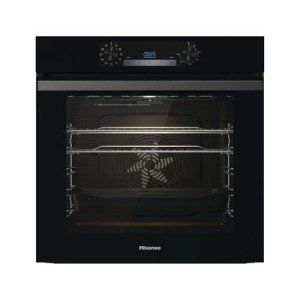The Rise of Built-In Ovens: A Comprehensive Guide
On the planet of modern-day kitchen areas, built-in ovens have carved a niche for themselves, changing both the functionality and visual appeal of cooking spaces. This short article digs into the numerous advantages of built-in ovens, their installation considerations, and a contrast with traditional freestanding designs.
Comprehending Built-In Ovens
Built-in ovens are created to be integrated seamlessly into kitchen cabinets, providing a streamlined and sophisticated appearance. Unlike freestanding models, which rest on the floor, built-in ovens are mounted at eye level or under counter tops, making them ergonomic and simple to gain access to.
Kinds Of Built-In Ovens
Built-in ovens can be found in several types, each dealing with various cooking needs and choices. Here's a short overview:
- Single Built-In Oven: Ideal for smaller kitchens, offering adequate cooking area for a lot of requirements.
- Double Built-In Oven: Offers separate compartments for cooking, ideal for bigger families or those who often captivate guests.
- Steam Ovens: Utilizes steam cooking for much healthier meals, maintaining nutrients and wetness.
- Convection Ovens: Equipped with fans to circulate hot air evenly, guaranteeing quicker and more consistent cooking.
| Type | Description | Best for |
|---|---|---|
| Single Built-In | One large oven compartment | Small families |
| Double Built-In | 2 compartments for simultaneous cooking | Large families |
| Steam Oven | Steam-based cooking technique | Health-conscious cooks |
| Stove | Fan-assisted cooking for even heat distribution | Those who bake frequently |
Benefits of Built-In Ovens
Aesthetic Appeal
Built-in ovens offer a smooth, integrated look that boosts the general appearance of a kitchen. They come in various designs and surfaces that can complement existing cabinets and decoration, developing a structured and cohesive look.
Area Efficiency
Designed to fit flawlessly into kitchen styles, built-in ovens can conserve important flooring space, making them ideal for smaller sized kitchens. By saving area, property owners can benefit from additional storage options or more counter area for food preparation.
Ergonomics
Setting up ovens at eye level removes the need to flex down, lowering strain when looking at food or removing hot meals. built in double oven and hob packages is especially useful for individuals with movement challenges.
Adaptability
Built-in ovens typically feature a range of cooking modes and functions, from convection cooking to self-cleaning alternatives, offering users flexibility in their cooking approaches.
Energy Efficiency
Modern built-in ovens are generally designed to be more energy-efficient than traditional models. Functions such as better insulation and advanced heating components assist lower energy consumption.
Installation Considerations
While the advantages of built-in ovens are considerable, certain factors require to be considered before deciding for this kitchen upgrade:
- Space Requirements: Built-in ovens require specific space measurements in terms of width, height, and depth. Precise measurements need to be taken into consideration to prevent installation issues.
- Electrical and Gas Hookups: Built-in ovens may require particular electrical wiring setups or gas connections. Qualified experts should handle this setup to make sure safety and compliance with local codes.
- Cabinets Compatibility: The style and structure of existing cabinets should be examined. Built-in models might require modifications to cabinets, or new cabinets might require to be developed to accommodate them.
- Expense: Built-in ovens typically come at a premium price compared to freestanding designs. Property owners need to examine their budgets accordingly and think about long-lasting advantages.
Installation Steps
Below are the fundamental actions involved in installing a built-in oven:
- Preparation: Measure the space and remove old appliances if required.
- Electrical/Gas Setup: Ensure the necessary electrical or gas connections are all set and checked for compliance.
- Cabinet Adjustment: Modify cabinetry as needed to fit the built-in oven.
- Positioning: Carefully position the oven into the designated space and level it.
- Connection: Connect the oven to power or gas and ensure all fittings are safe.
- Checking: Turn on the oven to ensure it runs properly.
Often Asked Questions (FAQs)
1. Are built-in ovens easy to set up?
While fundamental setup can be handled by a useful individual, it is suggested to employ an expert, particularly when dealing with electrical or gas fittings.
2. Can I replace my freestanding oven with a built-in oven?
Yes, but it will need mindful measurement and potentially some modifications to your existing kitchen cabinetry to fit the built-in design.
3. How do built-in ovens affect kitchen resale value?
Built-in ovens can boost a kitchen's appeal, frequently making it more attractive to prospective buyers, thus supporting a higher resale value.
4. Are built-in ovens more costly than freestanding designs?
Usually, built-in ovens are more expensive due to their style and features. However, their enhanced looks and functionality might justify the cost for numerous house owners.
5. What are the best brands for built-in ovens?
Some acknowledged brands consist of Bosch, Miele, KitchenAid, and Electrolux, each known for their quality and development.
Built-in ovens represent a substantial leap in kitchen innovation, using a blend of style, efficiency, and performance. While they require mindful factor to consider regarding space, setup, and cost, the advantages they offer make them an attractive option for contemporary house owners. Whether upgrading an existing kitchen or designing a brand-new one from scratch, built-in ovens can raise the cooking experience and improve general kitchen aesthetics. From functionality to elegance, they really embody the best of contemporary cooking solutions.

